This second article in the series on temporary works discusses temporary works failures and how structural engineers can learn from them.
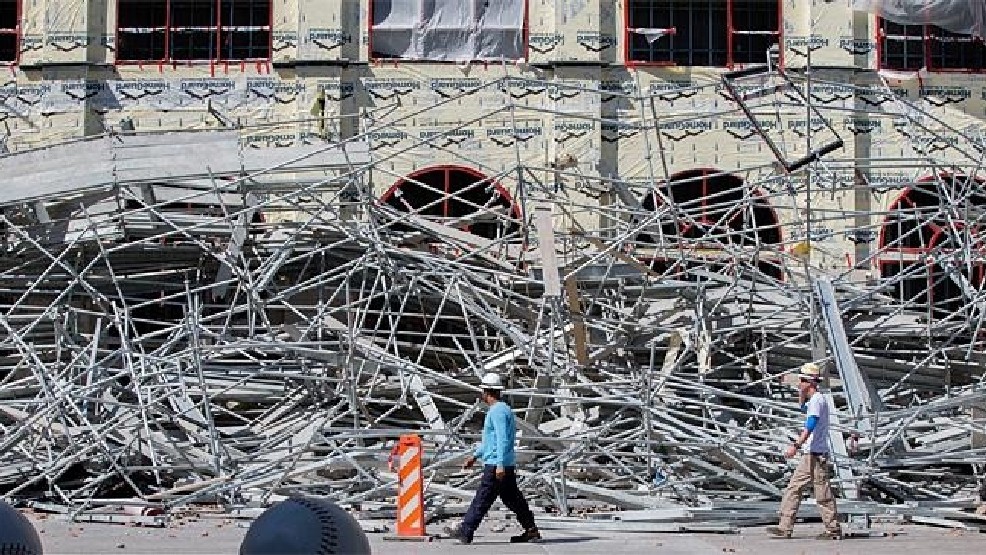
One of the most effective mechanisms for learning from failures is to learn from previous experiences, particularly when there has been a failure or a near hit. This is particularly more crucial when dealing with temporary works, which by their very nature are frequently prototypes and necessitate high levels of creativity and competence as well as meticulous attention to detail during design and implementation.
Failures can take several forms, be it a total collapse, partial collapse, local failures, excessive deformations, excessive differential settlement or simply signs of distress. In principle, temporary works failures aren’t different from those of permanent work, except that the former can be more dangerous. What makes temporary works failures more dangerous is that they usually occur suddenly, most times without any warning signs, thus leaving no window for strengthening or remedial procedure.
Talking about the causes of temporary works failures, they aren’t different from those of permanent works. Just like permanent works failures, human factors are ultimately responsible for a vast proportion of temporary works failure as will be demonstrated with past failures later in this article. They include incompetence, negligence, disorganization, miscommunication, greed et al.
Incompetence and negligence are both proponent of a same problem. Several reports on the concerns of engineers on events that have occurred during construction on site is due to a lack of supervision which is often due to either incompetence, negligence or miscommunication. While this could be unintentional and only the result of insufficient experience or the inability to see possible issues, it could also be the result of a deeper ingrained failure to recognize risk.
While greed isn’t often blamed for failure, it is a major cause of temporary work failure when shortcuts are made to maximize profits or increase commercial value without considering the repercussions. There is a significant difference between pursuing success while adhering to good engineering principles and acting recklessly and disregarding the rules of physics.
Finally, ‘Bad luck’ and ‘act of God’ are two more possible explanations for collapses. The first is not an acceptable explanation in a scientific setting, where good luck is widely accepted to be the consequence of thorough planning and execution, and bad luck is generally acknowledged to be the result of poor planning and execution.
Temporary Works Failures
As mentioned in the introductory paragraph, the most effective method of learn from failures is to look to the learn from pervious experiences. Thus, how best can we learn from temporary work failures than to look to the past. Here are several instances of temporary work failures.
Denver I-70 overpass girder collapse (USA)
In 2004, a sport utility vehicle (SUV) was struck by a collapsing, two-sectioned, manufactured steel girder line that had been constructed the previous night, resulting in death of three people (Figure 1).
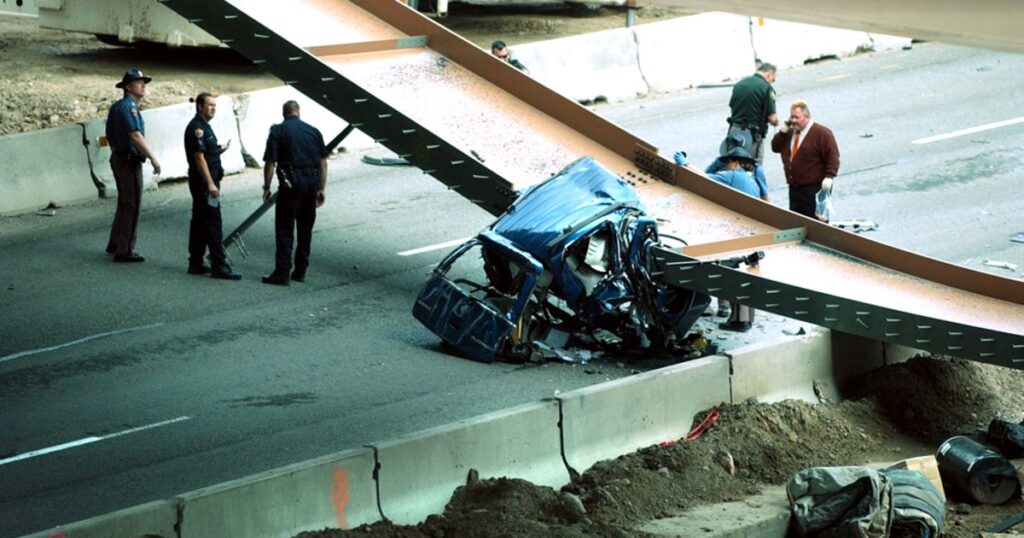
Investigation would later discover that the girder’s construction and the installation of the temporary bracing were insufficient. The investigation reported that, had the connections been bolted correctly or the girder had been installed plumb, the bracing may not have collapsed, and the girder may not have lost stability. However, the out-of-plumb girder and improperly fitted bolts combined to create an unstable bracing system that was neither short-term nor long-term suitable. Additionally, it was determined that the bracing’s preparation lacked care and caution.
B-tower building collapse (Netherlands)
In 2010, a 70-meter-tall tower structure was being constructed in the heart of Rotterdam in the Netherlands. The first five storeys’ floors were constructed as reinforced wide-slab floors. The precast boards were temporarily supported by scaffolding while the concrete was being cast. Five construction workers were hurt when the temporary structure fell as the floor was being laid.
Investigators found that the temporary construction was unstable and collapsed as a result. According to the Dutch Safety Board’s investigation. A significant number of stability bracing were missing in one direction. Although this oversight had been noted, no further action was taken as a result of unclear roles and duties.
Fanum House scaffold collapse (UK)
A 12-story office building in Cardiff, Wales, lost 30 tones of siding in the year 2000 while gusts of wind reached 39 m/sec (87 mph)3 (Figure 2). Only because it was after midnight and the street was desolate was a catastrophe averted.
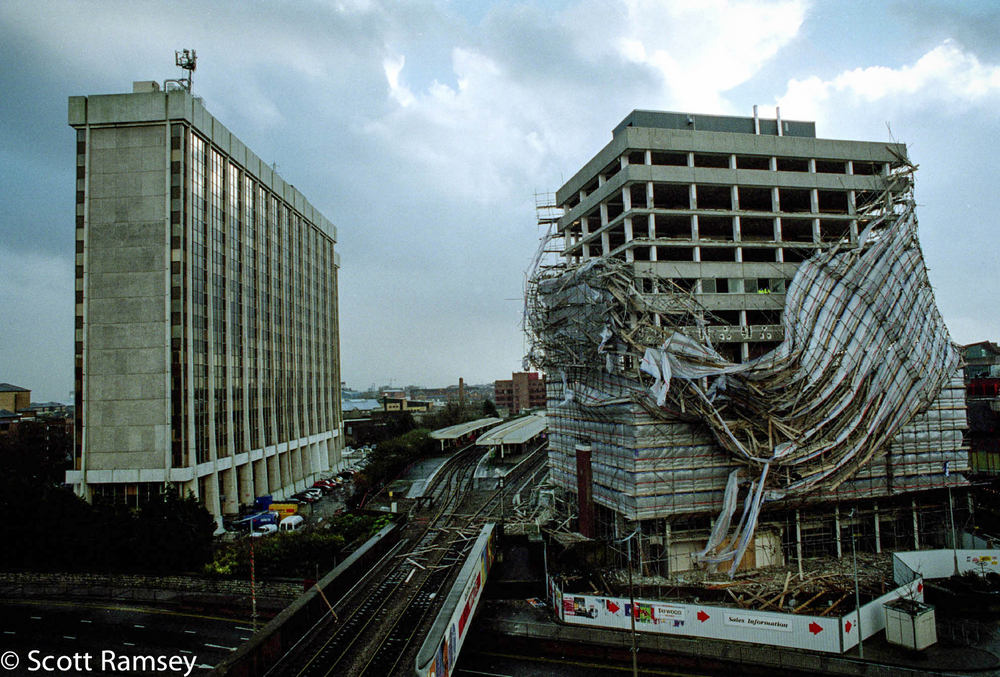
During a subsequent court hearing, investigators would claim that although 70% of the ties needed to keep the scaffolding in place were missing at the time of failure, it should have withstood the storm. But, because they were not fixed to the building properly, the remaining ties separated from it. And this was due to the fact that it was constructed by uneducated employees using the incorrect tools. Investigators revealed that this was “an accident waiting to happen.”
Cline Avenue ramp collapse (USA)
During a concrete pour in 1982, falsework beneath a ramp fell, resulting in the fatality of 14 workers and injuries to another 18 people.
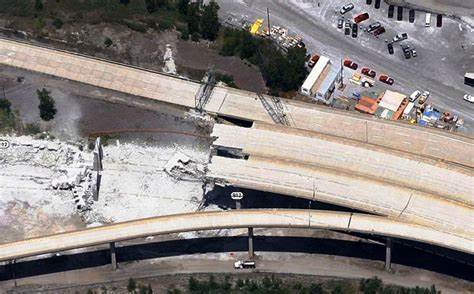
A part of the bridge known as Unit 4 fell, damaging an existing staircase and trapping employees on sections above. Then, as Unit 4 flipped and fell on its side, workers there were crushed to death. A cherry picker was dispatched by the remaining construction workers to rescue those stuck on the ramp, but five minutes after the initial collapse, Unit 5, the adjacent part, also fell. The “cracking of a concrete pad supporting a leg of the shoring towers” was determined to be the most likely reason for the collapse. Investigators were unable to find any engineering calculations to back up the pads’ intended use; to make matters worse, the pads were constructed substandard to the undocumented design.
Queen Juliana Bridge crane collapse (Netherlands)
In 2015, a brand-new bridge segment in Alphen aan den Rijn was scheduled to be raised into place. The plan called for the bridge piece to be hoist from another barge using two movable cranes that were set up on barges in succession. The barges capsized as the bridge portion was being maneuvered between the two cranes, causing the cranes and bridge section to fall onto nearby structures (Figure 4).
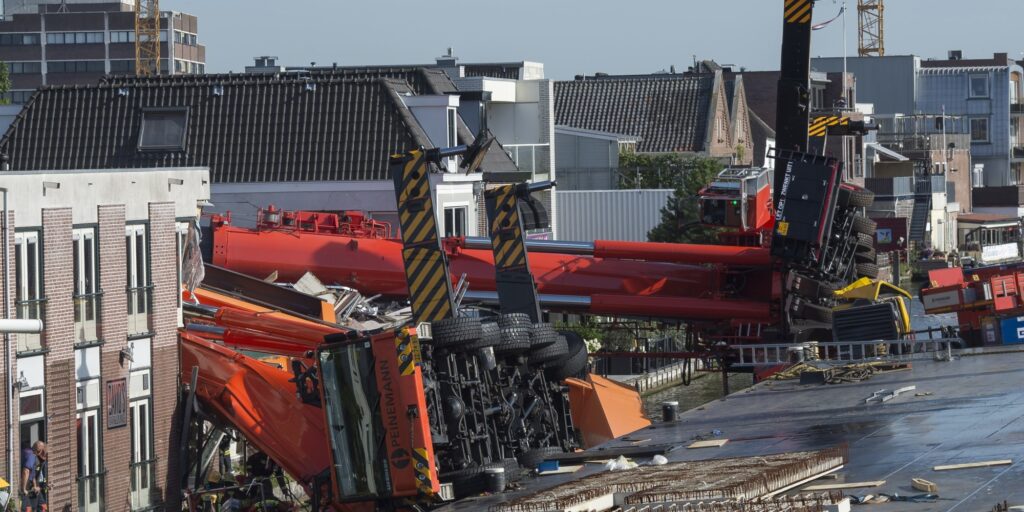
Several of these bridge pieces were destroyed, but thankfully no one was hurt or killed. The investigation revealed that both the crane operator and the barge operator had made mistakes in their planning for the lift. One of the cranes fell over and knocked everything else down because the barge carrying it was not stable enough to withstand the movement of the weight during the lift.
Nicoll Highway collapse (Singapore)
The tragic collapse of Singapore’s deepest cut-and-cover tunnel ever, occurred in April 2004 as a result of inadequate temporary works, bad design decisions, and poor construction techniques (Figure 5).
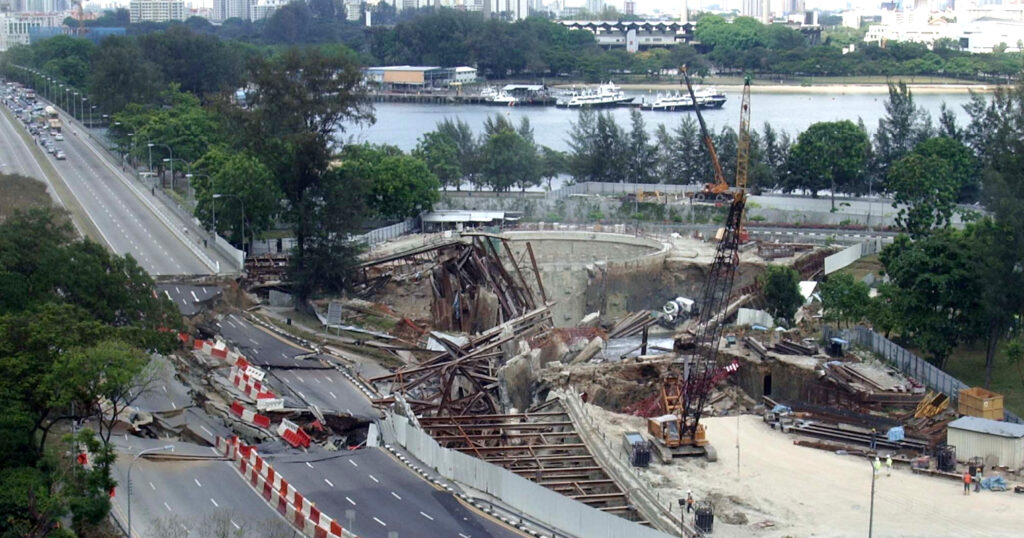
On a portion of tunnel being built for the city’s new Circle Line of the subterranean railway, close to the six-lane Nicoll Highway, a deep excavation collapsed. When the steel struts holding up the diaphragm walls of the excavation collapsed. There were four fatalities. The official report into the accident came to the conclusion that the failure of the strut-and-beam earth retaining wall system was caused by serious design and construction mistakes. Here are the mistakes:
- Use of an ineffective soil simulation model resulted in an overestimation of the soil strength at the site and an underestimation of the forces acting on the retaining walls during excavation.
- Errors in the strut-waler support system’s connections were improperly designed.
- Props that would have distributed the load from the struts to the walers during construction were not used.
The investigators concluded in their report that the net effect of this mistakes was that strut-waler system was 50% weaker than it should’ve otherwise been.
Conclusion
Perhaps, what can be seen from the several examples cited above is that the role of human factors in temporary work failures is as much as they are in permanent works. Weather it’s the case of the Cline Avenue that resulted in multiple fatalities and casualties marred by negligence and incompetence. or the 12 Storey building in Cardiff which lost 30 tons of siding, driven by the incompetence of those that erected it, one can see that human factors are not just the reason why structural failures aren’t actually averted but the reason for the failure in the very instance.
Another prominent issue that seems to appear in almost all these cases is the lack of lateral stability, either because bracing was missing or inadequate. Temporary works by virtue of their geometry are less stiff, hence more amenable to lateral actions. Hence, indeed, lateral stability is one of the most common causes of temporary work failures.
See: Temporary Works and the Structural Engineer
Sources & Citation
- A Soane (2017). Temporary works failures – what are the common causes, Professional Guidance, The Structural Engineer. 97(1) 24-26.
- A. Robbins (s.d.) AA Fanum House, Cardiff: Scaff old collapse, 13 December2000 [Online] Available at: http://bit.ly/2fTm3UR (Accessed: May 2023)
- Ratay R.T. (2007) ‘Professional practice of forensic structural engineering: What every engineer should know’, Structure, July, pp. 50–53.